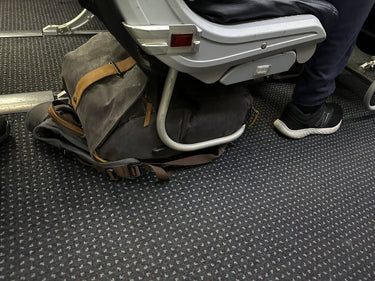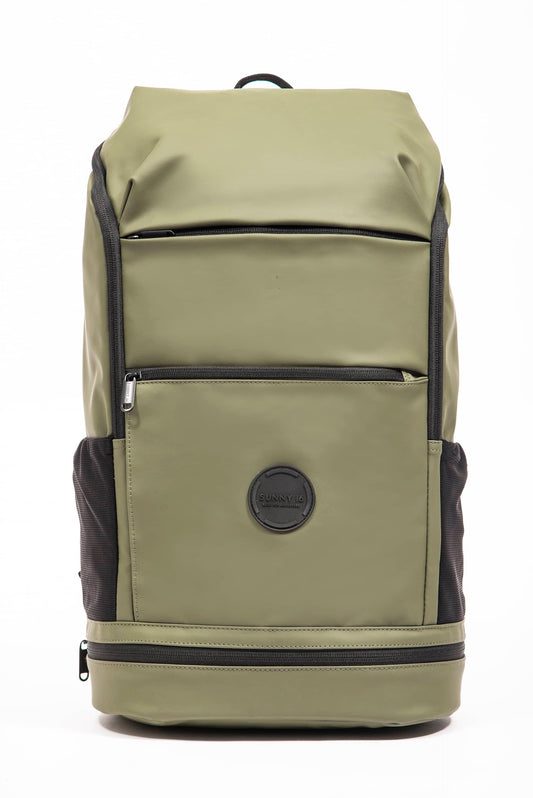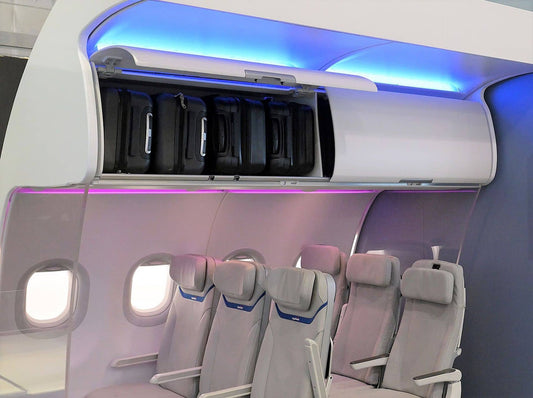
How to Use the Sunny 16 Rule in Photography
Share
Given the prevalence of the modern metering system, it's not uncommon to be unaware of the Sunny 16 rule. After all, you might think, "What's the point of knowing it?", if your mirrorless or DSLR camera adjusts to light automatically.
Not so fast!
The Sunny 16 rule can teach you valuable principles of metering. With it, you can compose beautiful shots in full sunlight without even needing a meter. We’ve also included the Sunny 16 chart which you can easily reference when you’re in the field.
With that in mind, this article will serve as a comprehensive guide to understanding the Sunny 16 rule.
Sunny 16 Rule Explained
- What is the Sunny 16 rule?
- How Does the Sunny 16 Rule Work?
- Why You Should Use the Sunny 16 Rule
- Sunny 16 Rule for Digital Photography
- Upgrade your Camera Backpack
What is the Sunny 16 rule in photography?
Photography doesn't always have to be complicated, and the Sunny 16 rule proves just that.
The rule is actually rather simple, as it informs you of the aperture you should be using on a sunny day. Can you guess what aperture setting it is? Well, as the title of the rule suggests, you should use f/16!
Also, remember that it's important to use a shutter speed equal to the reciprocal of your ISO (1/ISO value). If your camera is set to an ISO 100, for example, you should use a shutter speed of 1/100th of a second. If set to ISO 200, use a shutter speed of 1/200 second, and so on. It’s that easy.
The Sunny 16 rule is useful as it serves as a constant for cheat code for your aperture settings. For example, whether your ISO for a bright, sunny landscape is 100 or 400, you'll still use f/16 to get the best aperture.
Here’s an example of Sunny 16 ISO 400 when photographing an epic landscape shot.

How Does the Sunny 16 Rule Work?

So we know the Sunny 16 Rule works, and is an effective way of matching your exposure to the weather, but how exactly does it work? Are the numbers simply magic?
Well, it's an effective method because both the aperture and the shutter speed operate in incremental stops. For instance, adjusting the aperture by one stop, (e.g. f/16 down to f/11), will result in double the light entering your lens. While on the contrary, moving from f/16 to f/22 will halve the amount of light.
Shutter speed operates in the same way, as moving from a faster speed to a slower speed will result in twice as much light. In this case, if you move from 1/400 to 1/200, your shutter speed will be twice as long. Similarly, moving to a faster shutter speed will have the opposite effect.
Not only do these properties make the Sunny 16 rule effective, but they allow you to apply related rules to a variety of weather conditions. This makes manual exposure adjustments easy
Why You Should Use the Sunny 16 Rule

Of course, there are several reasons why you should use the Sunny 16 Rule. All of which will enhance not only your knowledge of photography, but your photography itself.
Here are a few different ways you can use this knowledge to your advantage:
Understanding Exposure

Exposure is the amount of light which reaches your camera sensor or film. It can affect how light or dark an image is, as well as unintentionally drowned out details with light. A good exposure is all about balance.
Pretty basic right?
While exposure may seem like a simple aspect of photography, that doesn’t mean you can’t learn more valuable information about it. The Sunny 16 Rule allows you to understand exposure further, by applying a particular aperture value to a sunny day.
Using the rule, you can begin to understand why certain apertures or levels of light cause your photo to look overexposed or underexposed.
Of course, it makes sense that you'd want to let less light in when it's extremely bright outside.
Not Relying on a Light Meter

First, take a moment to look at the Sunny 16 chart above to see how aperture and shutter speed are related to the weather.
The abundance of technology makes us forget the everyday tools that typically come with our cameras. While a light meter is still the best tool needed for precision, that doesn't mean you can't use the Sunny 16 Rule.
However, if you do have a light meter, you may wonder what the point of the Sunny 16 Rule might be?
Don’t dismiss it too quickly! Not only will you know how to adjust your exposure when you don't have a light meter available, but you'll also know more about photography in general. You can test yourself with different lighting scenarios and develop more organic understanding of your camera.
As shown in the specific Sunny 16 chart above, the Sunny 16 Rule can help you find the correct exposure settings without the use of a light meter. And the best part? you can memorize all the information you need faster than you might think.
Overall, the Sunny 16 Rule allows you to apply your own knowledge and understanding of exposure and aperture to your photography. With this knowledge, you won't always have to rely on a light meter.
It’s Consistent

They call it the "Sunny 16" rule for a reason. The rule doesn't fluctuate or get overly complicated.
This is great for when you're out and about or doing an outdoor photoshoot. Just think, if you're shooting outside and the sun pops out, you can think on your feet and immediately correct your exposure.
Weather Guide

We all know how much the weather and lighting can fluctuate during an outdoor photoshoot. While this can certainly be frustrating, the Sunny 16 Rule allows you to work with those changes.
If the weather turns and the clouds come out, you'll know that you have to widen your aperture to correct the exposure. Using the rule, you can comfortably play around with your aperture settings, while also having a smart starting point.
For example, if you were at f/11 but the sun seems to be coming out, you can start working your way up to f/16 until you find that exposure sweet spot.
Landscape Mastery

You don't always need a dense fog or any special time of the day to make a landscape pop.
Using the Sunny 16 rule, you can consistently capture sunny landscapes with beautiful exposure. The rule is especially useful for these types of photos, because it allows you to capture outdoor lighting with the correct exposure.
Therefore, if you're learning how to use the Sunny 16 Rule to manually adjust your aperture, try testing it out on a few landscapes!
Overall, the Sunny 16 Rule works as a general guideline, and a starting point for your outdoor photography. Things like color or reflectiveness or weather and time of day—even the direction you are facing—significantly affect your exposure. Take into consideration your surroundings, time of day, weather, and other variables then set your exposure accordingly. On an overcast day try starting with F/8 at 1/100th. For a sunset try an f/5.6 at 1/100 (see chart below for more).
By following the sunny 16 rule, you immediately know a range of camera settings that will be mostly correct. You still have the ability to bracket and consult your camera’s meter to refine things more accurately.
Sunny 16 Rule for Digital Photography Experiment
If you really want to dig in and hone your zen-like exposure skills, try taking some test shots on a clear, sunny day. For instance, here is a fun experiment you can use to examine the Sunny 16 Rule in action:
- Manually set your camera to a metered reading and take a photo.
- Switch to the sunny 16 rule and set it to sunny f16 at 400 ISO and 1/400 shutter speed and take the same photo.
- Shoot test varied photos for varied exposures.
- Distinguish one shot from another using a small piece of paper in your shot to indicate the Sunny 16 photos from the metered photos.
- Compare photos side by side on your computer monitor.
You might find slight or more noticeable differences between your test shots. Analyze the elements you like, and the ones you don’t. You might even find that you prefer some aspects of the Sunny 16 Rule exposure over your typical automatic exposure.
Upgrade your Camera Backpack
While outdoor photography sessions are fun, they can also require you to trudge a whole lot of camera gear outside. From one photographer to another, we all know that stuff is heavy!
With that in mind, why not upgrade your camera bag for the next time you go out to take some test shots? Being able to hold all your lenses and other equipment can be a true lifesaver when you're out in the field.
Luckily, the Voyager camera backpack is equipped to handle your photography needs. It's lightweight, spacious, and even water-resistant. You also have quick side access to have your camera right at your fingertips when the Sunny 16 rule will be coming into effect. You'll always be able to pull up to your photoshoot knowing your gear is safe and organized.
After all, if you have the equipment and the technique down, you'll save yourself a whole lot of time too! Wouldn't want you miss that perfect opportunity when the sun finally peaks out of the clouds.
Up Next: The Rule of Thirds in Photography
Now that you understand the Sunny 16 rule, you're ready to capture some beautiful full sun shots. Just think, you won't even need a meter!
Don’t be afraid to experiment and hone your intuitive skills. There’s a reason why this rule has been tradition among photographers for so long. Photography is not an exact science, indeed, but neither is art. Making great photos is all about your interpretation of each: science and art. Have fun growing and developing your knowledge base and style. Overall, The more you learn about aperture and exposure, the more skilled you’ll become.
That said, let us know in the comments where you plan on using the Sunny 16 Rule! And, if you're interested in learning more photography rules, check out our article on the Rule of Thirds.





























